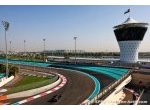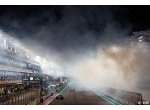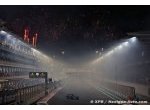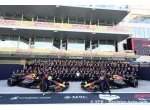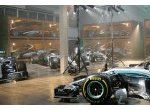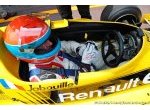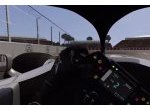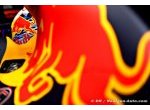Belgium 2017 - GP Preview - Haas F1 Ferrari
Team quotes
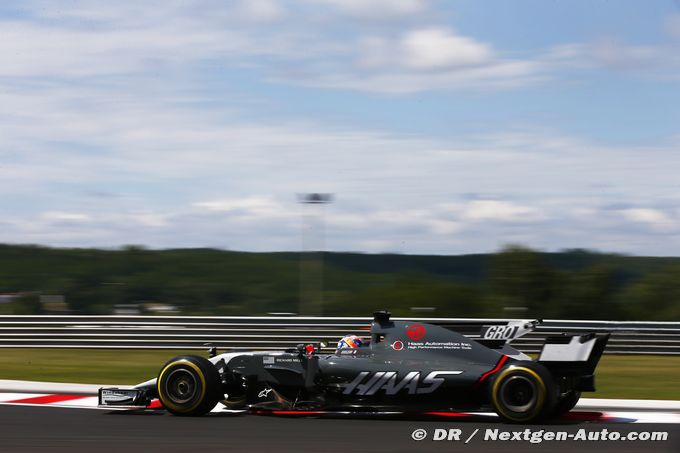
Those toiling within the globe-trotting FIA Formula One World Championship earned a three-week reprieve following the final in-season test at the Hungaroring Aug. 1-2 in Budapest, Hungary. The mandated summer shutdown allowed crew members to reacquaint themselves with their families and recharge prior to the stretch run of this year’s 20-race calendar, which resumes Aug. 25-27 with the Belgian Grand Prix at Circuit de Spa-Francorchamps.
Measuring in at 7.004 kilometers (4.352 miles), Spa is the longest venue in Formula One, outdistancing the series’ second-longest track, the 6.003-kilometer (3.730-mile) Baku City Circuit, by 1.001 kilometers (.622 of a mile). In addition to its length, Spa is known for its reputation of being a driver’s track, thanks in large part to the addition of the signature Eau Rouge and Raidillon corners in 1939, which created a fast and sweeping uphill, left-right-left combination that drivers view with reverence and attack with gusto.
Spa has hosted Formule One since 1925, with this year’s Belgian Grand Prix serving as the venue’s milestone 50th grand prix. The 19-turn circuit is a favorite of Haas F1 Team drivers Romain Grosjean and Kevin Magnussen. Before securing his most recent podium when he finished third in the 2015 Belgian Grand Prix, Grosjean clinched the 2011 GP2 Series title at the venerable track. And Magnussen, with two Formula One starts at Spa, has two Formula Renault 3.5 Series victories there in back-to-back seasons but with two different teams – Carlin in 2012 and DAMS in 2013.
Grosjean and Magnussen obviously look forward to Spa because of its racing heritage, but augmenting their collective fondness for the circuit is the warm welcome they receive from Haas Automation, as the venue provides a corporate homecoming for Haas F1 Team.
Its primary partner, American machine tool manufacturer Haas Automation, has its European headquarters strategically located in Brussels, about 150 kilometers (93 miles) west of Spa. This allows Haas Automation to provide its customers with the best sales, applications and service support in the industry. The modern 5,787 square-meter (62,300 square-foot) building includes a full service department and a comprehensive spare parts warehouse staffed by a multilingual team of factory-trained and Haas-certified support personnel. The facility also incorporates an extensive showroom stocked with the latest Haas CNC machines running demonstrations and customer test applications while housing a fully-equipped training area, where Haas personnel instruct Haas Factory Outlet (HFO) service engineers and customers from all over Europe. To facilitate quick delivery of product throughout Europe, the Brussels location maintains an inventory of new machines onsite in a 3,000 square-meter (32,291 square-foot) warehouse, with additional machines housed in nearby Antwerp that are always ready to ship.
Haas Automation’s European distribution system is based on the highly successful HFO concept, where a network of locally-owned distributors is exclusively dedicated to the sales, service and support of Haas products. Every HFO fields a service department staffed with factory-trained personnel and houses an extensive inventory of spare parts. Technicians are locally dispatched in service vehicles fully stocked with the parts and tools needed to successfully repair the customer’s machine the first time out.
If this structure seems akin to what Formula One teams do on a daily basis as they prepare for and compete in a grand prix, it should. The lineage between Haas F1 Team and Haas Automation is strong, as is the methodology. Both will be on display in Belgium – at Circuit de Spa-Francorchamps in the Haas F1 Team garage and in Brussels at Haas Automation Europe.
Gunther Steiner
Belgium is the home of Haas Automation’s European headquarters. You’ve been to many appearances and interacted with many Haas Automation customers. How have they embraced the team and Gene Haas’ endeavor into Formula One?
“The customers love it. They’re truly a part of Haas F1 Team. The customers at these events have fun, and they’re able to talk and interact with our drivers.”
Considering Haas F1 Team had a difficult two races leading into the summer shutdown, do you look at the Belgium Grand Prix as a time for the organization to hit a reset button to accomplish your goals for the rest of the season?
“Sure. We tried to hit the reset button, but we don’t know what we have until we get there and get our running in. We struggled a little bit in Hungary with it being a low-speed track. We are bringing some items for low downforce or low drag for Spa and Monza, and we are as confident as we can be that it works, but everybody else will be doing the same. It will be, as always, a tight pack in the midfield.”
With the Belgium and Italian Grands Prix being back-to-back, does it help that both are high-speed, low-downforce tracks?
“It is nice to have two similar races one after the other. If you’re good in Spa, you normally should be good in Monza as well, but it can go the other way, too. So, let’s hope we are good in Spa.”
When you face adversity like you did in Hungary where you had to overcome practice crashes on Friday while still searching for the car’s optimum balance in final practice and qualifying, how taxing is that on the team?
“It’s very difficult. What we have to do is go back to our normal protocols so we are prepared. I think we are always very well prepared, and we were in Hungary, but both drivers hit the wall and we lost a lot of practice time. And when you don’t practice, you don’t have enough time to learn about the tire and these days it’s all about tire management. We run a high-downforce package at Hungary and without all the data from FP1 and FP2, we were at a disadvantage. At the same time, our preparation for Hungary allowed us to salvage as much time as possible from FP1 and FP2. We at least got some running in, and what we did accomplish was a testament to the team and their attention to detail. The weekend in Hungary certainly tested the team, but it showed how hard we work to overcome adversity while remaining positive. Belgium is a new race and a new opportunity. We’re as prepared as were before Hungary and we hope that we can get two clean practices on Friday.”
Despite the Hungarian Grand Prix being a difficult race weekend, did the experience make the team stronger and better able to tackle future adversity?
“Racing involves ups and downs and you try to keep the downs as little as possible. I don’t think anybody wants that experience, but when you have those downs like we had in Hungary, we get back up again. We had the same thing happen to us last year and it happens to all of the teams. It’s not always ‘everything is fantastic,’ but I think the team is aware of this and nobody drops their head in defeat. It’s all about how you come back, not how you got down. We will try hard and we will come back again.”
Can you provide an update on what Haas F1 Team will do in regard to its brake package at Spa?
“At Spa we will be running Brembos to start off with and then we will see, but the plan at the moment is to run Brembos.”
With the halo cockpit protection system being mandated for use in 2018, how has it affected the development of the 2018 car?
“We gained a little bit of knowledge last year when it was supposed to come in for 2017, but it was never off the list so everybody was thinking about it and working on it. We’ll work on how we get the weight down on other parts of the car because we are at the minimum weight, otherwise our car just gets too heavy. We also need to find the best solution aerodynamically to integrate the halo into the overall body. So, it’s head scratching, but nothing unusual for good engineers but, for sure, there is some work that needs to be done.”
Will Haas F1 Team bring any more updates for the remainder of the 2017 season, or have you already begun the pivot to 2018 car development?
“We are still working through the data we gained from our last wind tunnel test to see if we bring another package for Japan or when we go to the United States. It looks more like we may bring some more updates for the U.S. Grand Prix.”
We’re past the season’s halfway mark, but knowing how tight the midfield is, does it almost feel like a new season when we show up at Spa after the summer shutdown because it is so tight among the midfield teams?
“Everything is possible here. In Austria, we had the fourth-fastest car. And in Hungary, Renault had the fourth-fastest car. It’s such an up and down in the midfield. Right now, it seems teams like Renault and McLaren have made gains, but maybe it is track specific. Nobody really knows. Everyone is speculating and I don’t want to make a speculation. We will do the best job we can in all of these circumstances and try to keep our heads in front of the people behind us and try to catch up to some in front. Everybody is trying to do the best they can and we will do the same. To speculate about what others are doing doesn’t help you. We just need to work hard and try to make the best out of it.”
As the racing season winds down toward its finish, silly season ramps up. How nice is it to have your driver lineup set for 2018?
“It’s fantastic. Having our drivers signed up now is the best place to be. They are solid. They work well with the team. There is no uncertainty about who is there. They don’t get nervous. They can focus on defending their position and bettering it.”
Romain Grosjean
Belgium is the home of Haas Automation’s European headquarters. You’ve been to many appearances and interacted with many Haas Automation customers. How have they embraced the team and Gene Haas’ endeavor into Formula One?
“Every time we do something with Haas Automation it’s been very well organized and we always receive a very warm welcome from all the guests attending. It’s been great to be representing Haas Automation in Formula One. It’s a big name in motorsports and a big name in industry. Whenever we meet their customers, especially when we’re with Gene (Haas), they’re always very happy. It feels like a big family, which is nice to be a part of.”
Spa has been called a driver’s track. Why?
“It’s just a great track. There are very high-speed corners and there are a lot of turns, different types, some high speed, some low – just a good variety overall. It gives you a good feeling to drive.”
Spa has high-speed straights and corners combined with a tight and twisting section, especially between turns eight and 15. How do you set up your car to tackle all the different aspects of the track? Do you have to make sacrifices in one section to gain an edge in other sections?
“You always see different approaches at Spa. Either you’re fast in sector one and sector three, which are the high-speed sectors, or you’re fast in sector two, which has more of the corners. Both work pretty well, so it’s a matter of how you want to approach the race.”
Can you describe the sensation you feel inside the car when you drive through Eau Rouge and Raidillon? Are you able to take that section flat out?
“The first lap you go through flat out, you feel sick, like you’re on a rollercoaster because it goes up and down. You’re thinking, will I make that for the race? But, once you’ve done it once, it’s all ok and you just enjoy the g-forces.”
How important is it to enter Eau Rouge in clean air to ensure you have the maximum amount of downforce available?
“It’s certainly a corner where you don’t want to have a mistake. Qualifying in clean air is certainly quite good. On the other hand, if you get a big tow, you can have a massive advantage going into turn five. There’s a bit of an argument for both philosophies there.”
Your most recent podium was earned in the 2015 Belgian Grand Prix. You started ninth and made it all the way to third, finishing behind the Mercedes duo of Lewis Hamilton and Nico Rosberg. How did you make up so many positions?
“We had a good car in Belgium that year. I had qualified fourth, but started ninth due to a gearbox penalty. We had a good strategy and good timing with a safety car, too. I managed to overtake a few cars and get on the podium. Honestly, it was one of those weekends where everything just goes to plan.”
Prior to the 2015 Belgian Grand Prix, your last podium came in 2013 at the United States Grand Prix in Austin, Texas. How good did it feel to get back on the podium, especially after enduring a 2014 season where you only had two point-scoring finishes?
“It was great for all the guys, and for myself. We had a perfect weekend on the track. For everyone involved, it was a very good feeling. I guess it was kind of the same feeling as scoring the first points for Haas.”
Does a race like you had at Spa in 2015, where after a trying season in 2014, remind you that podiums are possible with determination and hard work?
“If I turn up at a race weekend not thinking that I’m the best, or that I can’t win the race, I’d be better off staying at home with my children. I always want to be on the podium. I always want to try to win the race. Of course, it depends a lot on the car, but in the end, you can never give up and you always strive to give your best. That’s the mentality you should have.”
Do you have milestones or moments from your junior career that you enjoyed at Spa?
“I won the GP2 title there in 2011. That was a great year.”
What is your favorite part of Spa?
“I can’t choose just one part and say it’s my favorite. The whole circuit just comes together nicely.”
Describe a lap around Spa.
“You start off with the hairpin at La Source. It’s a very low-speed corner. You need a good exit to go flat out up to Eau Rogue and then you’re on to turn five, the first right-left corner. That’s normally in fourth gear. Turn seven is quite good fun. It’s a high-speed corner going down. Then you’ve got turn eight with tricky braking. You need to be well positioned on the right hand side of the exit for turn nine. Then you’re downhill again massively to the double-left turns 10 and 11 – the fastest corner of the circuit. Then it’s on to the second right-to-left corner, carrying a bit more speed than you did into (turns) five and six. The next double right hander is very important to go to the backstraight, which is very long. You then go through the Bus Stop chicane – you need big braking. Then you have a very tricky low-speed corner, where the exit and the traction are tricky. It’s very difficult. If you get it right, you get a good lap time.”
Kevin Magnussen
Belgium is the home of Haas Automation’s European headquarters. You’ve been to many appearances and interacted with many Haas Automation customers. How have they embraced the team and Gene Haas’ endeavor into Formula One?
“It’s always great to meet the Haas Automation guests around the world. It’s great to see how enthusiastic they are about the Formula One project. It’s good to feel like one big team.”
There was a time in between the 2008 and 2009 racing seasons where you worked as a factory welder. What was the company you worked for and what were some of the projects you worked on?
“The company was called Schröder Metal. I was basically welding things for shops, signs and so on.”
You seem to have a good rapport with Haas Automation customers when they’re at the track. Did that time spent as a welder perhaps give you a good idea of how people make a living with their hands, specifically, how machinists use Haas CNC equipment to build things, just like you did as a welder?
“I have a good understanding of how the customers work and what they do. I feel there’s a good relationship based on that synergy between myself and the whole company.”
When you finally got the support you needed to continue your racing career and run Formula Renault in 2009 with Motopark Academy, how big was that moment?
“It was a very big moment and a really good feeling. I was pretty depressed about not being able to race, so when I got the opportunity back it was an amazing feeling.”
Spa has been called a driver’s track. Why?
“I think it’s just because it’s an extremely fast, technical and challenging circuit.”
Spa has high-speed straights and corners combined with a tight and twisting section, especially between turns eight and 15. How do you set up your car to tackle all the different aspects of the track? Do you have to make sacrifices in one section to gain an edge in other sections?
“No, Spa is just flat out. You’re pushing everywhere.”
Can you describe the sensation you feel inside the car when you drive through Eau Rouge and Raidillon? Are you able to take that section flat out?
“I’m sure it will be pretty easy flat out. It’s a bit like a rollercoaster.”
How important is it to enter Eau Rouge in clean air to ensure you have the maximum amount of downforce available?
“Not so important. It will be flat anyway.”
Do you have any milestones or moments from your junior career that you enjoyed at Spa?
“I’ve won in every category I’ve raced there with the exception of Formula One. I have many good memories from competing at Spa.”
What is your favorite part of Spa and why?
“Eau Rouge and Pouhon are probably the best sections, but the whole track is just amazing.”
Describe a lap around Spa.
“It’s fast, challenging and fun.”
